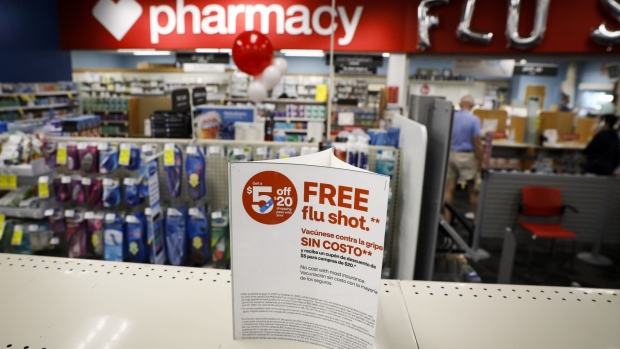Dec 5, 2023
CVS Launches New Reimbursement Model to Simplify Drug Pricing
, Bloomberg News

(Bloomberg) -- CVS Health Corp. plans to change how its more than 9,000 pharmacies get paid with a new reimbursement model designed to simplify drug pricing.
The biggest US drugstore chain aims to make the payment system more transparent by using a formula based on a drug’s cost, a fixed markup, and a fee that reflects the value of the pharmacy services, the company said Tuesday.
Critics have long expressed concern about the lack of transparency in drug pricing, and have accused companies that manage pharmacy benefits of inflating health-care costs. CVS’s step signals that the industry is moving away from the traditional, complex pricing model and toward the “cost-plus” approach introduced by billionaire Mark Cuban at his pharmacy company.
“The industry is moving rapidly to improve transparency in pricing for both patients and payers in order to stay ahead of legislators who continue to spotlight the opaqueness of drug pricing,” said Jonathan Palmer, an analyst with Bloomberg Intelligence. The CVS program “is just the latest salvo in the industry’s efforts to prove that they’re working to reduce costs.”
Cigna Group’s Express Scripts, the country’s second-largest prescription drug benefits manager, last month announced a similar cost-based model to start next year. It said the offering will be more expansive than Cuban’s, covering prescriptions for brand name and generic drugs, and include its mail-order and specialty pharmacies.
Last month, Walgreens Boots Alliance Inc. announced the launch of its new Rx Savings Finder, a digital tool designed to help customers save money on prescription medications.
CVS said it will work with contracted pharmacy benefit managers and commercial payers to set clear terms for the cost of drugs and related reimbursement. It plans to launch the new model, dubbed CostVantage, in 2025, it said in the statement.
CVS shares rose more than 2% in pre-market trading Tuesday.
“We are encouraged by these developments, but we also believe that medical care costs could remain higher for longer as more seniors get procedures done post-pandemic and as other costs remain elevated,” said John Boylan, an analyst with Edward Jones. “This could limit earnings growth in the medium term.”
(Updates with analyst comment in final paragraph. A previous version corrected the move in shares.)
©2023 Bloomberg L.P.

